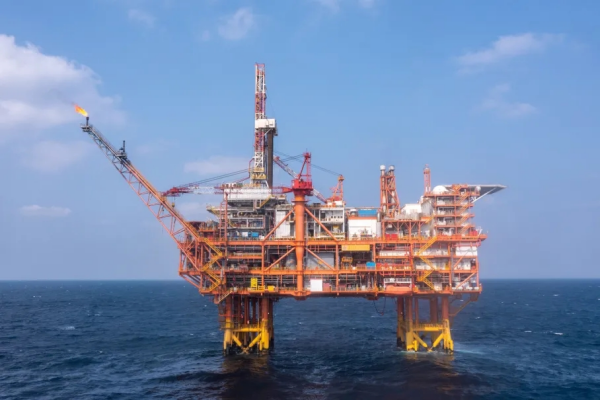China's first offshore carbon dioxide storage demonstration project, the Enping 15-1 Oilfield in the Pearl River Estuary Basin, has successfully stored over 100 million cubic meters of carbon dioxide, according to China National Offshore Oil Corporation (CNOOC) on September 10.

The Enping 15-1 Oilfield carbon dioxide storage project has achieved a cumulative carbon storage volume of over 100 million cubic meters. [Photo/sasac.gov.cn]
This milestone demonstrates the maturity of China's offshore carbon dioxide storage technology, equipment and engineering capabilities. It marks significant progress in advancing the country's "dual carbon" goals and supporting the transition to a green, low-carbon economy.
As the first high-carbon-dioxide-content oilfield in the eastern part of China's South China Sea, the Enping 15-1 Oilfield, if developed in a conventional mode, would produce carbon dioxide to the surface along with crude oil. This would not only corrode offshore platform facilities and subsea pipelines, but also increase carbon dioxide emissions.
Since its official commissioning, the project has operated safely for over 15,000 hours, with a peak daily gas injection volume of 210,000 cubic meters.
In May, CNOOC launched China's first offshore Carbon Capture, Utilization and Storage (CCUS) project, achieving a full-chain upgrade in offshore CCUS equipment, technology and engineering and marking a significant advancement in marine energy recycling. This initiative enhances oilfield recovery by using captured carbon and secures carbon storage through oil extraction.
Over the next decade, the oilfield is expected to reinject more than one million tons of carbon dioxide, boosting crude oil production by 200,000 tons.
(Executive editor: Yuan Ting)